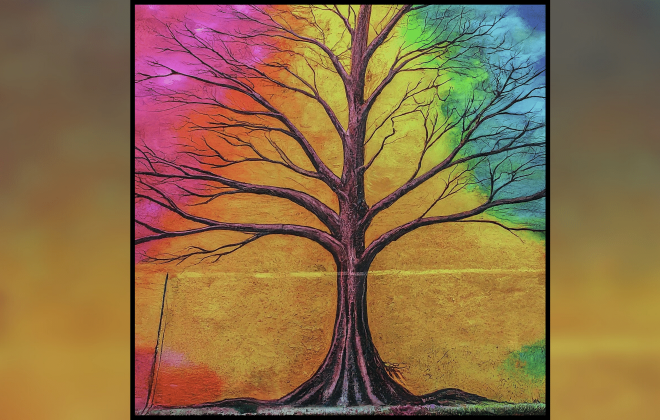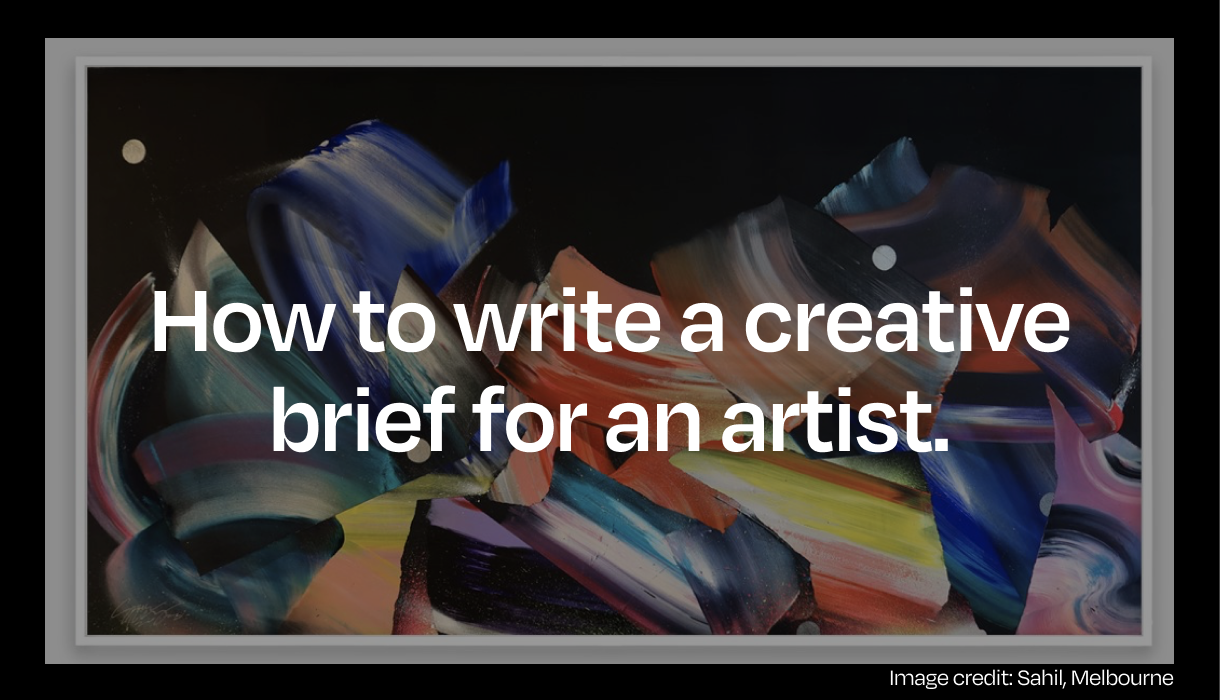
The Art of Crime: 10 Chilling Courtroom Sketches
What is a courtroom sketch artist?
A courtroom sketch artist is an artist who creates illustrations or sketches of events or proceedings that occur inside a courtroom. These sketches typically depict key players such as judges, defendants, witnesses, and lawyers, and help to provide a visual representation of the events that take place in a trial. The role of the sketch artist is important in the media, as it provides a visual record of legal proceedings for those who were not present in the courtroom.
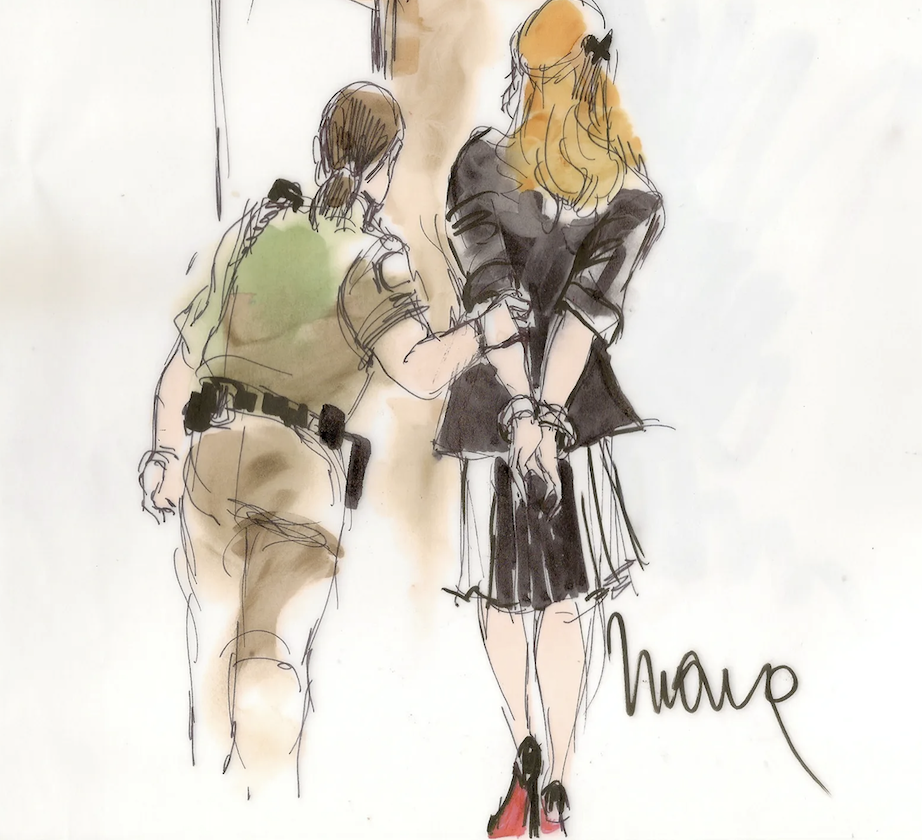
What is the purpose of a courtroom sketch artist?
Courtroom sketch artists have been used for centuries as a means of visually documenting legal proceedings. The use of courtroom sketches has several reasons:
- To provide a visual record: Courtroom sketch artists help to create a visual record of legal proceedings for people who were not present in the courtroom.
- To enhance understanding: Courtroom sketches can help to bring the events of a trial to life, making it easier for people to understand and follow the proceedings.
- To document history: Courtroom sketches provide a historical record of legal proceedings, which can be used by historians, researchers, and the public to learn about important trials and legal events.
- To provide a media representation: Courtroom sketches are often used by media outlets to accompany articles or news broadcasts, providing a visual representation of the trial for the public.
These sketches have also played a key role in shaping public opinion and attitudes toward legal proceedings. By capturing critical moments in trials and by depicting the proceedings in an objective and impartial manner, courtroom sketches can help to promote transparency and accountability in the legal system.
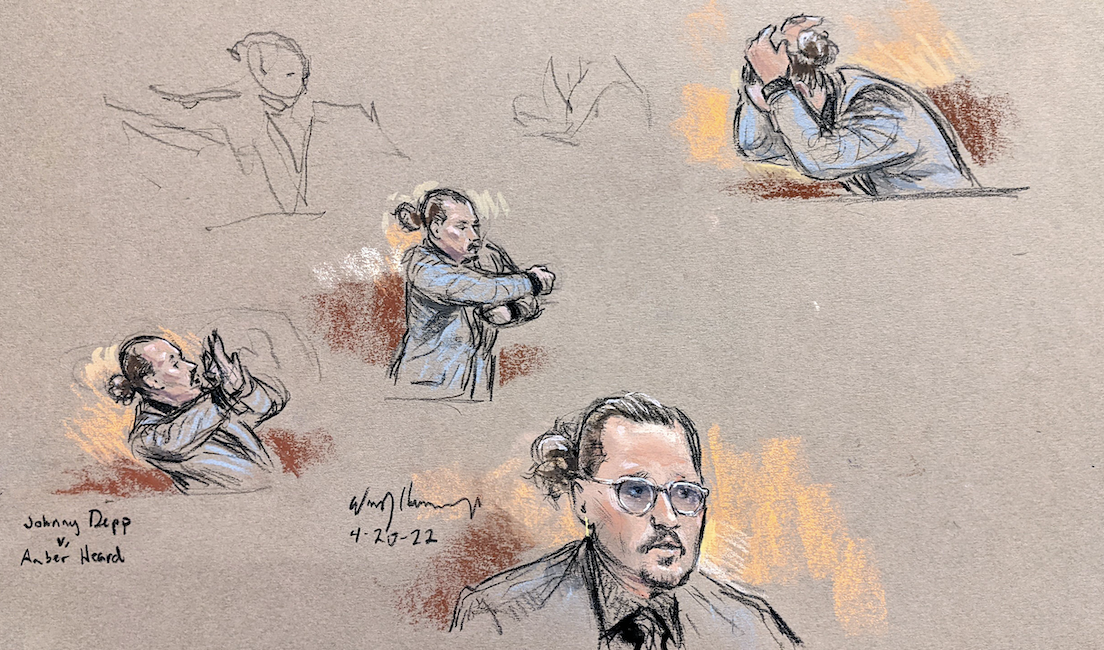
Who are famous courtroom sketch artists?
There have been many talented courtroom sketch artists throughout history, but some of the most well-known include:
- Janet Hamlin: A well-known courtroom sketch artist who has covered many high-profile trials, including many terrorist related trials and attacks.
- Jane Rosenberg: She has been working as a sketch artist for over 30 years, covering many high-profile court cases and trials.
- Bill Robles: Famous for his sketches of the trial of Charles Manson and the Rodney King beating trial.
- Elizabeth Williams: Known for the Michael Jackson trial and the trial of the Tsarnaev brothers for the Boston Marathon bombing.
These artists have captured some of the most important and memorable moments in legal history through their artwork, and their contributions to documenting legal proceedings are widely recognised and respected.

10 Most Famous Courtroom Sketches
1. O.J Simpson
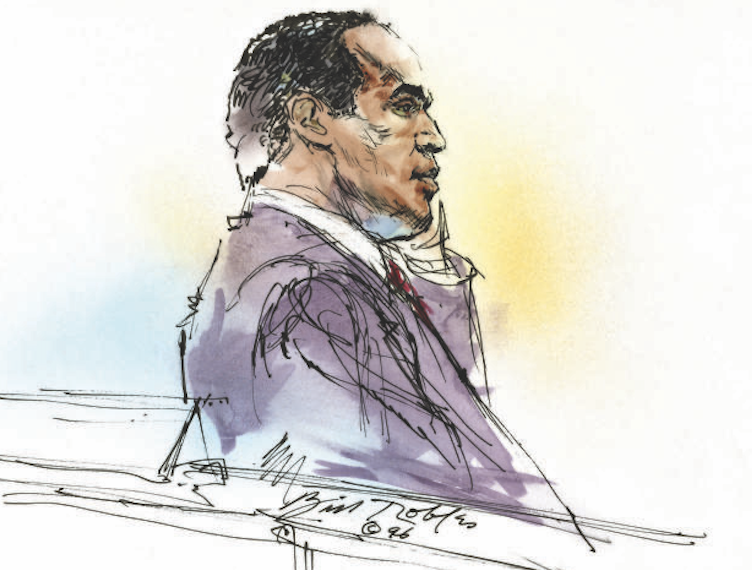
The O.J. Simpson trial was a celebrity criminal trial that took place in the mid-1990s. The trial involved former professional American football player O.J. Simpson, who was charged with the murders of his ex-wife, Nicole Brown Simpson, and her friend, Ron Goldman. The trial was widely covered by the media, and several artists created courtroom sketches to visually document the proceedings. One of the most famous of these artists was Bill Robles – known for sketching the trials of Charles Manson and Michael Jackson.
“When I first saw O.J., I couldn’t believe how big he was,” Robles recalls of his initial in-person encounter at the 1995 double-murder trial. “What a huge guy. That was my first impression — how easily he must have taken out those two people, especially when he jumped out at them,” he said in an interview with The Washington Post.
2. Harvey Weinstein
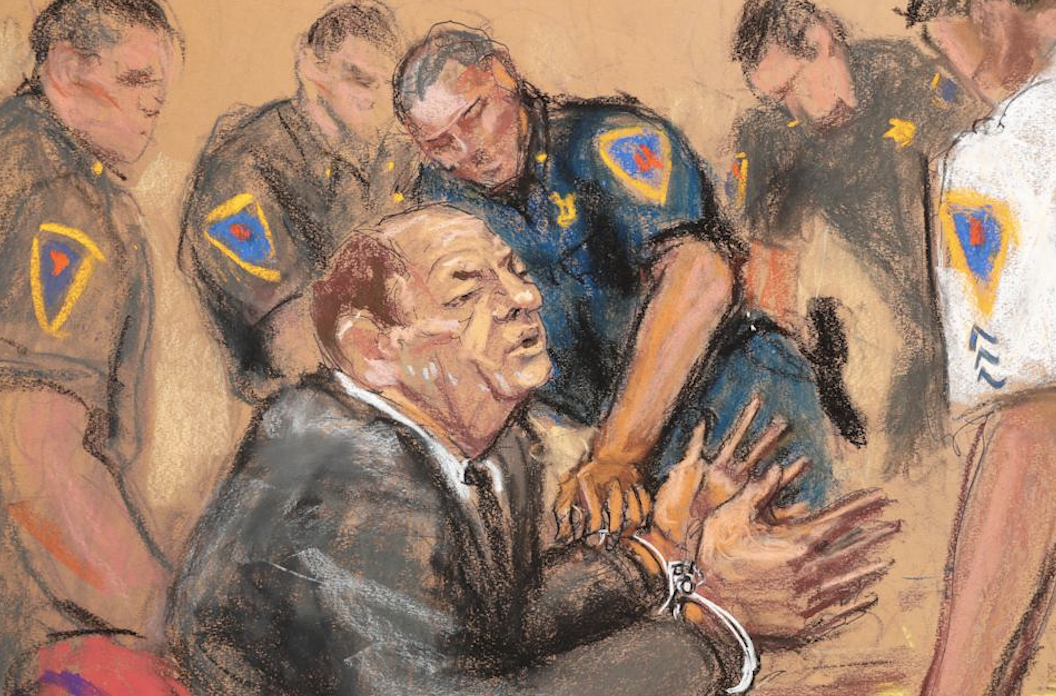
The Harvey Weinstein trial took place in New York City in 2020. Harvey Weinstein, a former film producer, was charged with several counts of sexual assault and rape. Sketch artist Jane Rosenberg captured the distressing events of the trial on paper. Her sketches quickly circulated revealing the grotesque behaviors of the now disgraced film producer.
“Trying to see him and not be blocked by court officers or his lawyers during the trial, that was always a problem,” Jane shared of the experience with Yahoo!
“But I started to get his likeness. It took a while, took some tries. But when I’m on a trial and I keep drawing the same person over and over I start to understand what their face is made up of, structurally. So it gets easier… I liked that he was all lumpy. It gave me a lot to work with. It’s easier for me to draw lumpy people than smooth, perfect people.”
The trial ended with Weinstein being found guilty and he was later sentenced to 23 years in prison. The trial was widely regarded as a significant moment in the #MeToo movement, and it brought attention to the issue of sexual assault and harassment in the workplace.
3. Charles Manson

During the late 1960’s and early 1970’s Charles Manson was put on trial for conspiracy to commit murder in connection with several high-profile killings, including the murder of actress Sharon Tate. The Charles Manson trial launched the career of courtroom sketch artist Bill Robles. His portraits captured the most dramatic moments of the trial which resulted in Charles Manson being found guilty of conspiracy to commit murder. He was sentenced to life in prison and was originally housed at San Quentin State Prison in California. He remained in prison for the rest of his life and died in 2017 at the age of 83.
4. Khalid Shaikh Mohammed

Known for his involvement with the 9/11 attacks on the World Trade Center and the Pentagon in 2001. He was arrested in 2003 in Pakistan and later held at the U.S. military prison in Guantanamo Bay, Cuba. In 2012, he was charged in a military tribunal at Guantanamo Bay with war crimes and murder in connection with the 9/11 attacks.
Janet Hamlin sat in court and sketched Khalid Shaikh Mohammed alongside another defendant Walid bin Attash. “The mood of the court definitely has an influence. As much as you try to stay neutral, it has an influence. If somebody is going to be angry and have an outburst, then you’ve got to show that in your drawing with the blind quality, colors, and boldness of movement.” Janet said in her interview with HuffPost.
“The 9/11 trial, they actually had this portable courthouse with the viewing separated by sound delays and glass. And so, you don’t have the luxury of just listening and reacting because what you’ve heard happened way before. We hear “all rise” and everybody’s already sat down. So, in that case, I have to watch body language and movements to try to determine what’s going on.”
5. Bill Cosby
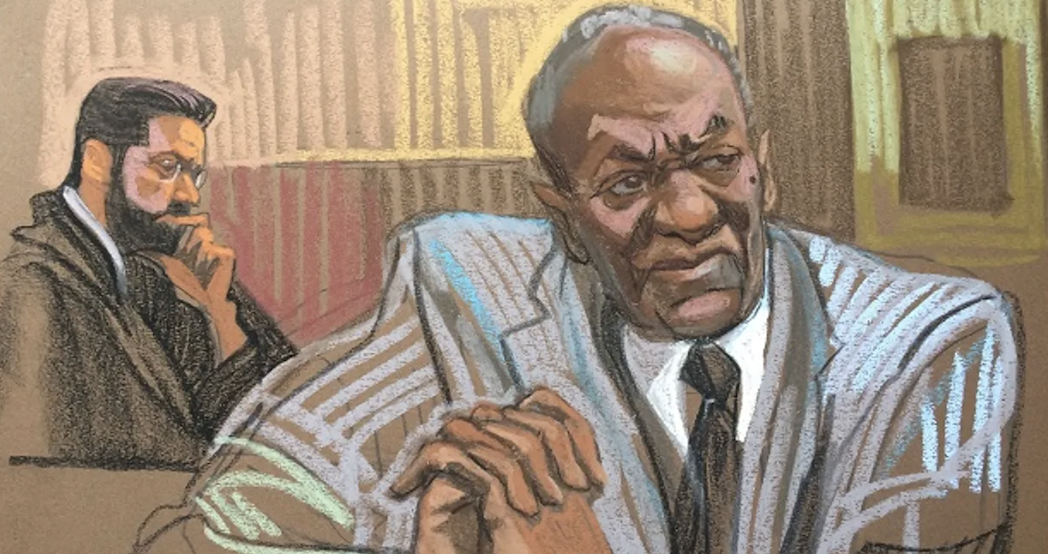
Sketched by Christine Cornel, the Bill Cosby trial took place in 2017 when the actor was charged for several counts of sexual assault. The outcome of the Bill Cosby trial was that he was found guilty of three counts of aggravated indecent assault and sentenced to serve three to ten years in prison. In an interview with WHYY PBS, Christine Cornell said that Bill Cosby was easy to draw. “He’s like a gargoyle, very tragedian features, so expressive,” she said. “It draws itself — all you have to do is get a little glimpse of him, and there’s something rich there.”
6. Michael Jackson
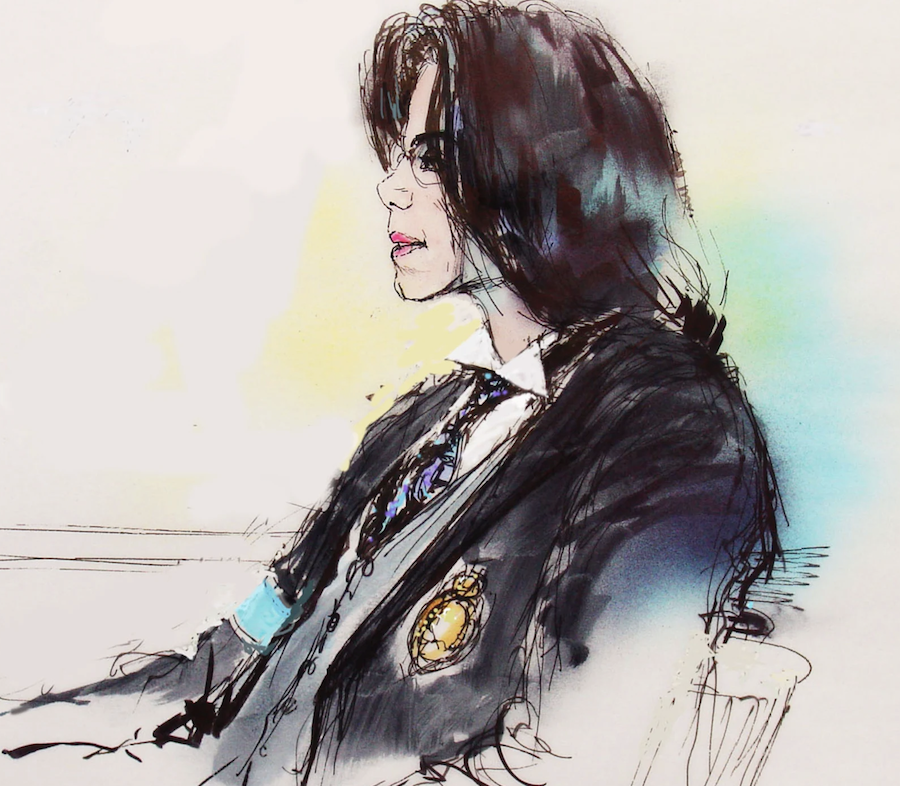
Michael Jackson was an American singer and entertainer who was charged with multiple counts of child molestation in 2005. The proceedings lasted several months, and they involved testimony from witnesses, evidence, and arguments from both the prosecution and the defense. The trial ended with Michael Jackson being found not guilty on all counts, and he continued to maintain his innocence until his death in 2009.
One of three courtroom sketch artists, Bill Robles, wrote a journal entry of his experience at the trial:
“The best part of my job is the excitement of working on deadlines in the center of this exciting trial. You can execute your art in any way you want, and if the results are there, you are respected by your colleagues in the media. […] Michael Jackson is so tall and thin. He was looking green last week, so I used a little extra blue and green. With his gaunt cheekbones, from my side view, his hair covers most of his face, unless he turns his head. Sometimes I’ve only got to put a nose, chin and a little jaw showing.” – Bill Robles entry for Digital Journalist 2005
7. Anne Boylen

Anne Boleyn’s courtroom sketch is a rare exception to the traditional courtroom sketches we know today. Anne Boleyn was the second wife of King Henry VIII of England and the mother of Queen Elizabeth I. She was tried for treason, adultery, and incest in 1536 and was subsequently executed by beheading. The trial was held in the King’s Bench in Westminster and was presided over by a panel of judges appointed by King Henry VIII. The charges against Anne Boleyn were largely seen as being politically motivated, as King Henry VIII was seeking to annul his marriage to Anne in order to marry Jane Seymour.
It is speculated that these sketches are some of the earliest known “courtroom” sketches.
8. Ghislaine Maxwell
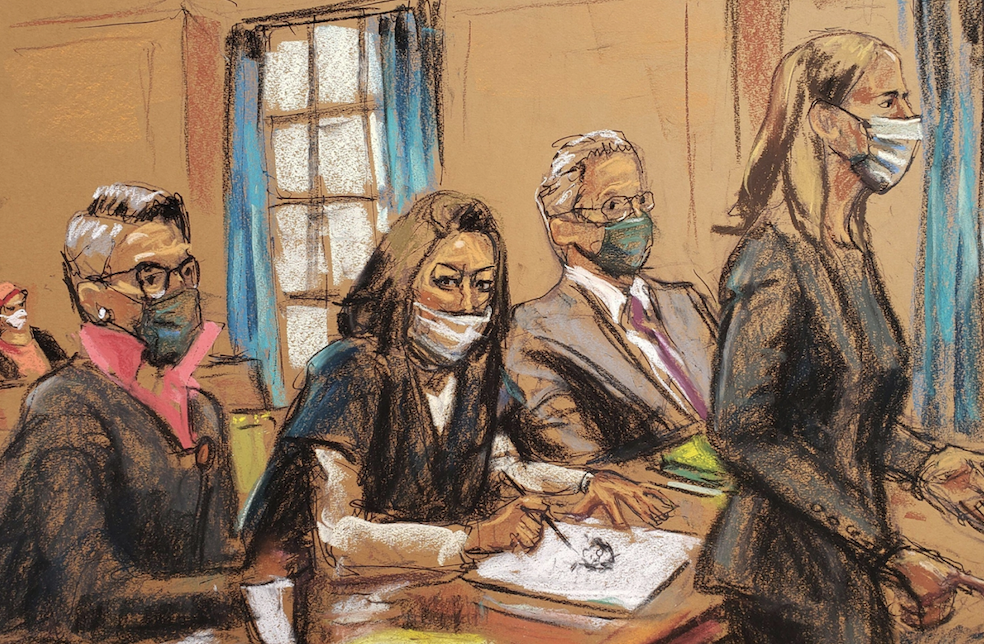
Ghislaine Maxwell is a British socialite who has been charged with various crimes related to her alleged involvement in the sexual abuse and exploitation of minors by her former partner, Jeffrey Epstein.
Famous courtroom sketch artist Jane Rosenberg covered Ghislaine Maxwell’s trial. During her trial, Maxwell picked up a pen and paper and proceeded to sketch Jane Rosenberg in retaliation. Jane Rosenberg joked in an interview with the Guardian that she often gets requests from defendants for “more hair” or to “remove their double chin”.
When courtroom artists sketch jurors or sensitive witnesses, they often leave their faces blank. Jane Rosenberg’s illustrations of the Ghislaine Maxwell trial include poignant portraits of anonymous witnesses with blank faces.
9. The Watergate Scandal
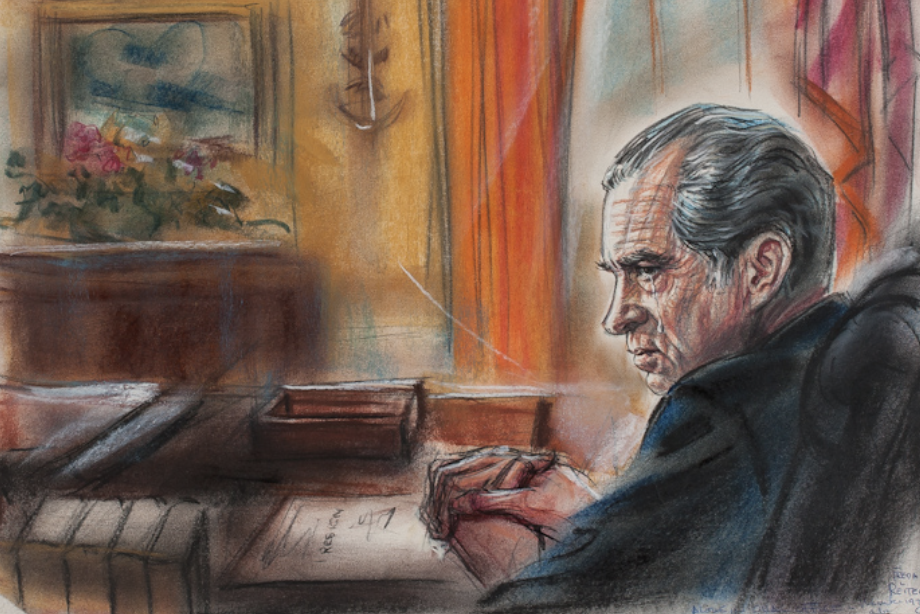
The Watergate trial was a political scandal that took place in the United States during the 1970s. The scandal involved a break-in at the Democratic National Committee headquarters at the Watergate complex in Washington, D.C. in June 1972, as well as a cover-up of the subsequent investigation by President Richard Nixon’s administration. Several high-ranking officials from the Nixon administration were charged with a variety of crimes, including obstruction of justice, perjury, and abuse of power.
Courtroom sketch artist, Freda Reiter, covered the demise of Richard Nixon’s presidency. Cameras were not permitted so Freda’s powerful work was aired on nightly news shows and became the popular images of a political scandal that captured the frustrated nation’s imagination.
10. David Berkowitz
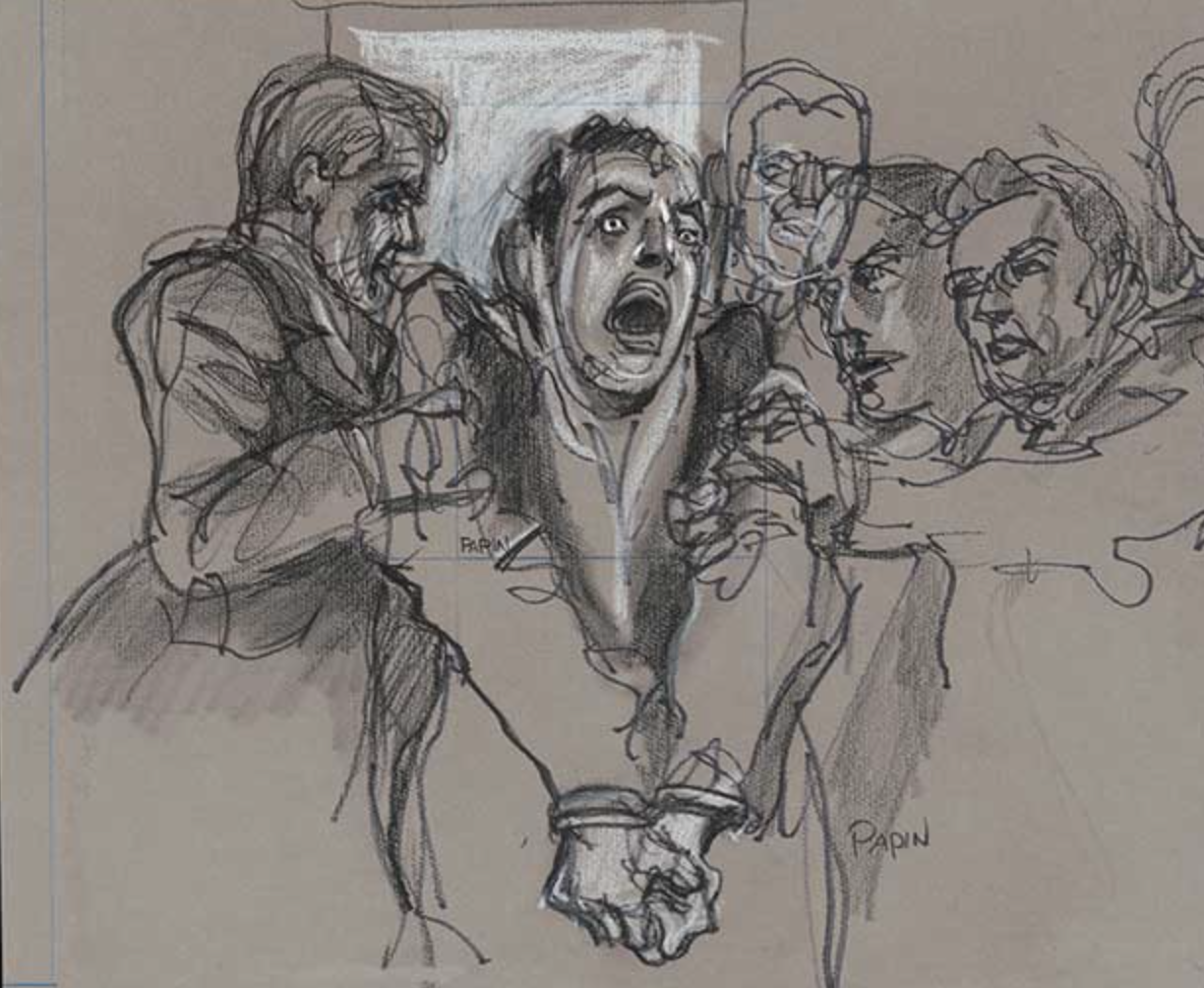
Courtroom sketch artist Joseph Papin illustrated David Berkowitz, also known as Son of Sam, being dragged from the courtroom. David Berkowitz was convicted of killing young couples late at night and sending letters from the “Son of Sam” to the New York Daily. Appearing in court in 1978, Berkowitz exploded in the courtroom, shouting, “I’ll kill them all.” Joseph Papin’s drawing captured the criminal’s mental breakdown before he returned to court to plead guilty months later. Joseph’s illustration was then used on the front cover of New York Daily.
Looking to create a sketch? Check out these sketch artists near you.
Check out top-rated local artists near you!
Are you an artist ? Sign Up










